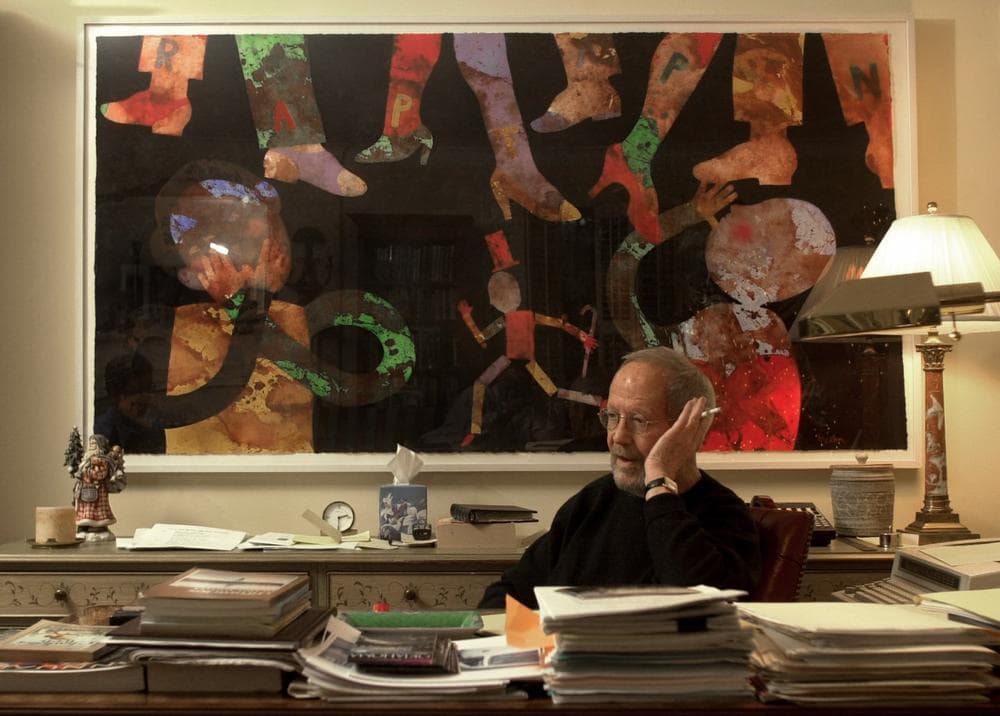Advertisement
Circumference Everywhere: Considering Elmore Leonard's Legacy
Among the many tributes following the death of crime writer Elmore Leonard on August 20th, perhaps the most moving was written by his friend Mike Lupica of the New York Daily News. It describes in loving detail the spacious, sunny office where the author spent his last moments, surrounded by the implements of his craft: the huge desk, the yellow pads, the Pilot pen, the aging electric typewriter. I remember this office well. It’s where several of the interviews that contributed to my new book, "Being Cool: The Work of Elmore Leonard," took place, and it was expansive and sunny because it was the living room of his house. You could say the room represented its occupant. For Elmore Leonard, writing was living, and he lived for his work.
By “work” I don’t mean what you do when you’re not having fun. Of the work of writing, Leonard told me, “So once I get into it, it’s just a lot of fun and I get it going and try to entertain myself.” Famous for what A.D. Reed called his “Panasonic ear,” Leonard would listen to the voices in his head and, like a jazz musician picking his way among the riffs and scales at his fingertips, he would make himself their instrument of expression. “I’m a serious writer,” he told interviewer Lawrence Grobel, “but I don’t take it seriously. I try and relax and swing with it.”
Of the work of writing, Leonard told me, 'So once I get into it, it’s just a lot of fun and I get it going and try to entertain myself.'
Elmore Leonard took delight not only in his own work, but also in that of others. Keats once wrote, “I look upon fine phrases like a lover.” He had in mind Shakespeare and Milton. Leonard seemed to feel the same way about Hemingway and Higgins. He would have balked at his own writing being called “fine,” a concept he would have associated with the “hooptedoodle” he had banished from his “Ten Rules of Writing.” But what Martin Amis called Leonard’s “planed-smooth style” is as fine in what it does, reducing form to function, as a Shaker bedstead or an electric chair.
Leonard also enjoyed cultivating a public image as a proletarian writer who hated “literature,” along with the college professors who wrote about it. In our interviews, he never once expressed this kind of lunch-bucket reverse-snobbery. His tolerating me — a college professor treating his own writing as “literature” — for even two minutes, let alone hours at a time, proves that.

The truth is, Elmore Leonard respected good writing, period. What he hated was pretentiousness. When the eponymous hero of LaBrava disparages highbrow reviews of his photography, Leonard gives us examples lifted verbatim from reviews of his own books. “I thought I was just taking pictures,” says Joe LaBrava. Read on, however, and you’ll hear him use a phase from Walker Evans that, if not highbrow, is anything but proletarian: “I see ‘images whose meanings exceed the local circumstances that provide their occasion.’” LaBrava is not as unsophisticated as he likes to pretend, and neither was Elmore Leonard.
Much has been written lately about Elmore Leonard’s legacy. There are two parts to it: first, what he has left to readers, and second, what he has left to writers.
Leonard’s legacy to readers includes a well-trained ensemble of gangbangers and dopedealers and clownish but terrifying psychopaths; cops honest and crooked, high-divers and low-riders, U.S. marshals and Delta mobsters. These characters should outlive their creator a good many years, like his famous “sound,” which arose from a consistent striving for invisibility: “my sound,” Leonard told Robert Skinner in 1987, “is the sound of my characters. You never hear me.”
For Elmore Leonard, writing was living, and he lived for his work.
As for Leonard’s legacy to writers, testimony is coming from all directions — the circumference is everywhere. The center, however, is hard to find. “The best dialogue man in the business,” Loren Estleman told Detroit Free Press writer Julie Hinds in her August 21st appreciation. But Leonard’s mastery of free indirect discourse — that dialogue derivative that makes us feel we are “listening in” to a character’s thoughts — is just as accomplished. No one cites this feature of Leonard’s work as an important legacy to writers, perhaps because he succeeded so well in making it “invisible.”
Leonard’s prose shows us “nothing that is not there,” as Wallace Stevens once put it. But that ability depends on “the nothing that is.” It’s easier for a writer to learn what to put in than what to leave out. It’s impossible to teach a writer who isn’t having fun to relax and “swing with it.” Leonard’s joy in his work radiates from every page. He leaves epigones, but no successors. He was a generous and modest man. I don’t think he’d want it any other way.

Related:
This program aired on September 12, 2013. The audio for this program is not available.